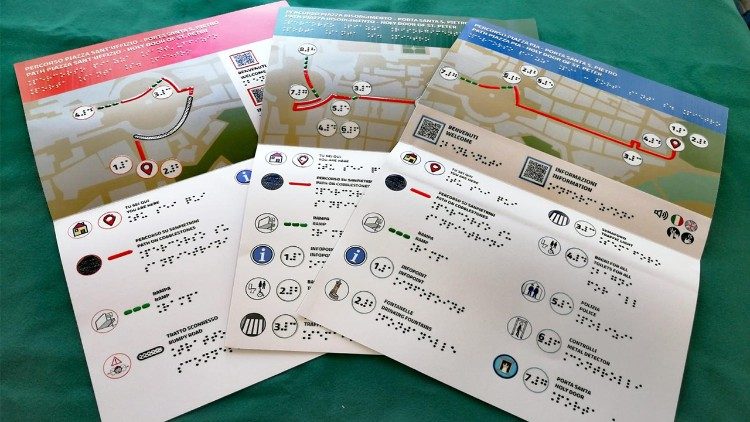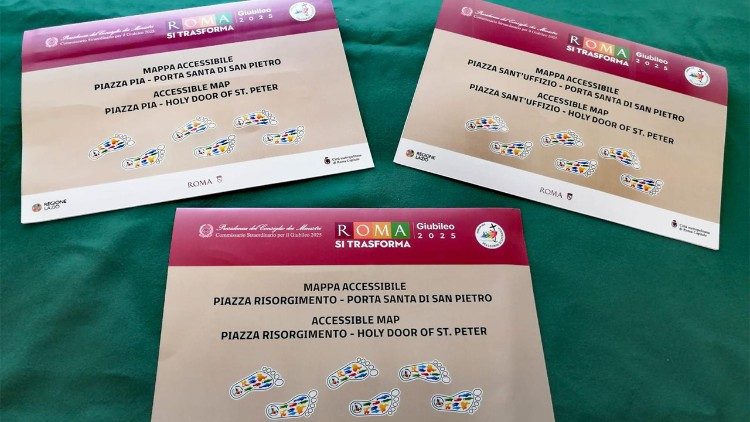(ZENIT News / Rome, 13.07.2025) – Three routes facilitate the Jubilee journey in Rome for pilgrims, including those with different needs.
Recently, it has been enhanced with inclusive signage for people with disabilities and useful to all. These information resources are supported by multilingual text, audio, and video resources for access to St. Peter’s Colonnade, rest areas, restrooms, and drinking fountains.

Camilla Capitani is the Culture and Tourism Advisor for the Roman Union of the Blind. She is visually impaired and collaborates in the creation of accessible itineraries in museums. She explains that «the three itineraries were born from the desire of the City of Rome and the Vatican to make the Jubilee accessible to people with disabilities, although I would say to all, to make the Jubilee a truly inclusive event, through the creation and use of a series of truly useful tools for everyone, each in their own diversity.»
The inclusive signage routes for access to St. Peter’s Basilica begin in Piazza Risorgimento, Piazza Pia, and Piazza Sant’Uffizio, which are points near St. Peter’s Square where crowds of people gather on their way to the Vatican Basilica.
There are markings attached to the floor, easily recognizable by contrasting colors, in the form of a foot, with images of people inside and outside that represent human diversity. They are not a game: they are a valid tool for pilgrims with disabilities and for any believer.

Paper maps, both tactile and talking, are provided with QR codes to download audio content and simplified texts that help people experience the Jubilee. They are easily accessible and are available in Italian and English. The information is provided in simple fonts, with appropriate font sizes and color contrast for people with visual impairments or dyslexi
The inclusively signposted access routes to St. Peter’s Basilica begin in Piazza Risorgimento, Piazza Pia, and Piazza Sant’Uffizio, points near St. Peter’s Square where crowds of people gather on their way to the Vatican Basilica.
There are markings attached to the floor, easily recognizable by contrasting colors, in the form of a foot, with images of people inside and outside that represent human diversity. They are not a game: they are a valid tool for pilgrims with disabilities and for any believer.
Paper maps, both tactile and parallax, are provided with QR codes to download audio content and simplified texts that help people experience the Jubilee. They are easily accessible and are available in Italian and English. The information is provided in simple fonts, with appropriate font sizes and color contrast for people with visual impairments or dyslexia.
Camilli Capitani highlights the social and cultural value of the initiative: «It’s a great message of openness, because it truly pays attention to everyone’s needs.»

